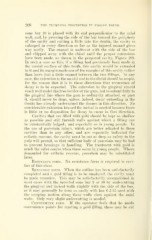Page 460 - My FlipBook
P. 460
208 THE TECHNICAL PROCEDURES IN FILLING TEETH.
cone bur 10 is placed witli its end perpendicular to the axial
wall, and, by pressing the side of the bur toward the peripherj^
of the cavity and cutting a little into the dentin, the cavity is
enlarged in every direction so far as the injured enamel gives
way easily. The enamel is undercut with the side of the bur
and chijiped away with the chisel until the proper extensions
have been made, as shown in the prepared cavity, Figure 291.
In such a case as this, if a filling had previously been made in
the mesial surface of this tooth, this cavity would he extended
to it and its margin made one of the margins of this ca\aty rather
than leave just a little enamel between the two fillings. In any
case, the extension to the mesial and to the distal should be ample,
for the reason that it is in these directions that recurrence of
decay is to be expected. The extension to the gingival should
reach well under the free border of the gum, l)ut to extend fully to
the gingival line where the gum is ordinarily attached, or past
it, should never be done, unless, indeed, decay extending in the
dentin has already undermined the tissues in this direction. No
considerable extension toward the incisal is needed because there
is little or no disi:)Osition for decay to recur in that direction.
Cavities that are filled with gold should be kept as shallow
as possible and still furnish walls against which a filling can
be substantially lodged; and especially so in young people. In
the use of porcelain inlays, which are better adapted to these
cavities than to any other, and are especially indicated for
esthetic reasons, the cavity must be cut as deep as safety to the
pulp will permit, so that sufficient body of porcelain may be had
to prevent breakage in handling. The treatment with gold is
much the safer course when these occur in young people. Where
demanded for esthetic reasons, porcelain may be substituted
later.
Resistance form. No resistance form is required in cavi-
ties of this class.
Retention fobm. When the outline has been satisfactorily
completed and a gold filling is to be employed, the cavity must
be made retentive. This may be satisfactorily accomplished in
most cases with the inverted cone bur 8 or 10 by imdercutting
the gingival and incisal walls slightly with the side of the bur,
or it may generally be done as easily with hoe 6-2-12 used with
the scraping motion along these walls close against the axial
walls. Only A^ery slight undercutting is needed.
Convenience form. If the operator feels that he needs
convenience points for starting a gold filling, these may be cut


